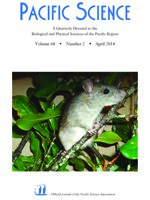Structure of the southwestern East Sea ecosystem and role of common minke whales (Balaenoptera acutorostrata) in this ecosystem during the postcommercial whaling moratorium (post-CWM) period (1986–2007) were examined using an Ecopath model. Results showed that catch and biomass of common squid was highest in this ecosystem (catch, 0.302 t/km2; biomass, 1.031 t/km2). Although this ecosystem consists of primary producers, primary consumers, secondary consumers, and terminal consumers, most taxonomic groups were classified as secondary consumers. Common minke whales were classified as terminal consumers along with apex predators. Trophic level of common minke whales in this ecosystem was estimated at 3.34, and mean trophic level of this ecosystem was estimated as 2.91. Relative contribution of common squid to total energy flow at trophic level III, which includes common minke whales, was highest (72.0%). However, relative contribution of common minke whales at this trophic level was low (1.3%) compared with other taxonomic groups. This study is one of the first to address anthropogenic impacts (commercial whaling) on the trophic role of common minke whales in the East Sea, and it could potentially be used to understand the importance of common minke whales to this ecosystem within a context of potential biological removal (PBR).
How to translate text using browser tools
1 April 2014
Ecological Role of Common Minke Whales in the Southwestern East Sea (Sea of Japan) Ecosystem during the Postcommercial Whaling Moratorium Period
Kyung-Jun Song,
Chang Ik Zhang
ACCESS THE FULL ARTICLE

Pacific Science
Vol. 68 • No. 2
April 2014
Vol. 68 • No. 2
April 2014




